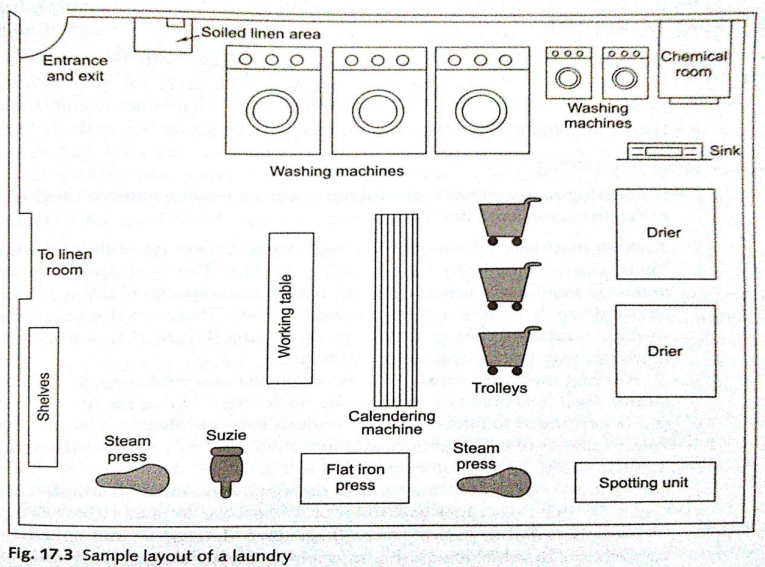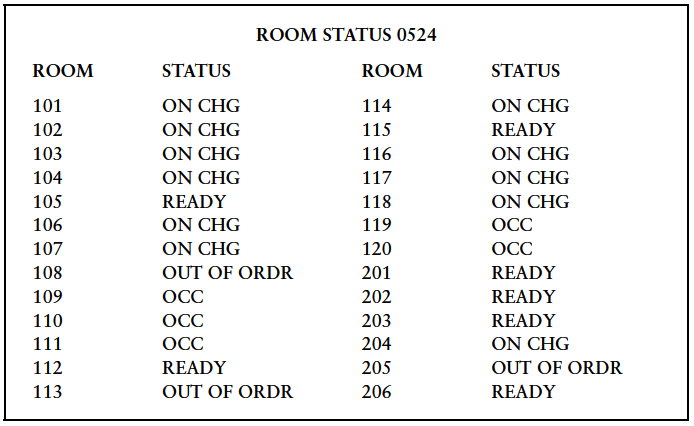Monthly trending articles on ConnectClue

Post updated on: Jul 2, 2021 3:54:50 AM
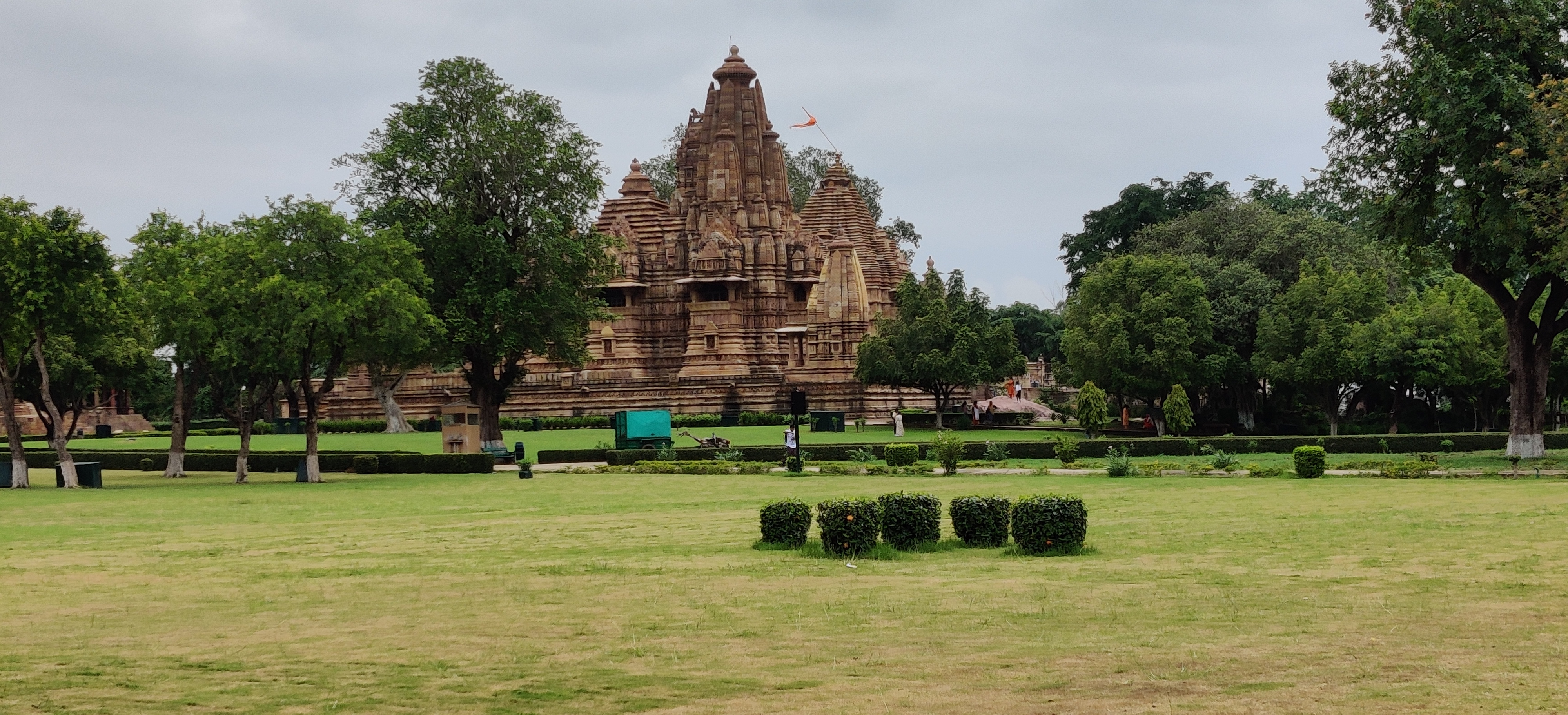
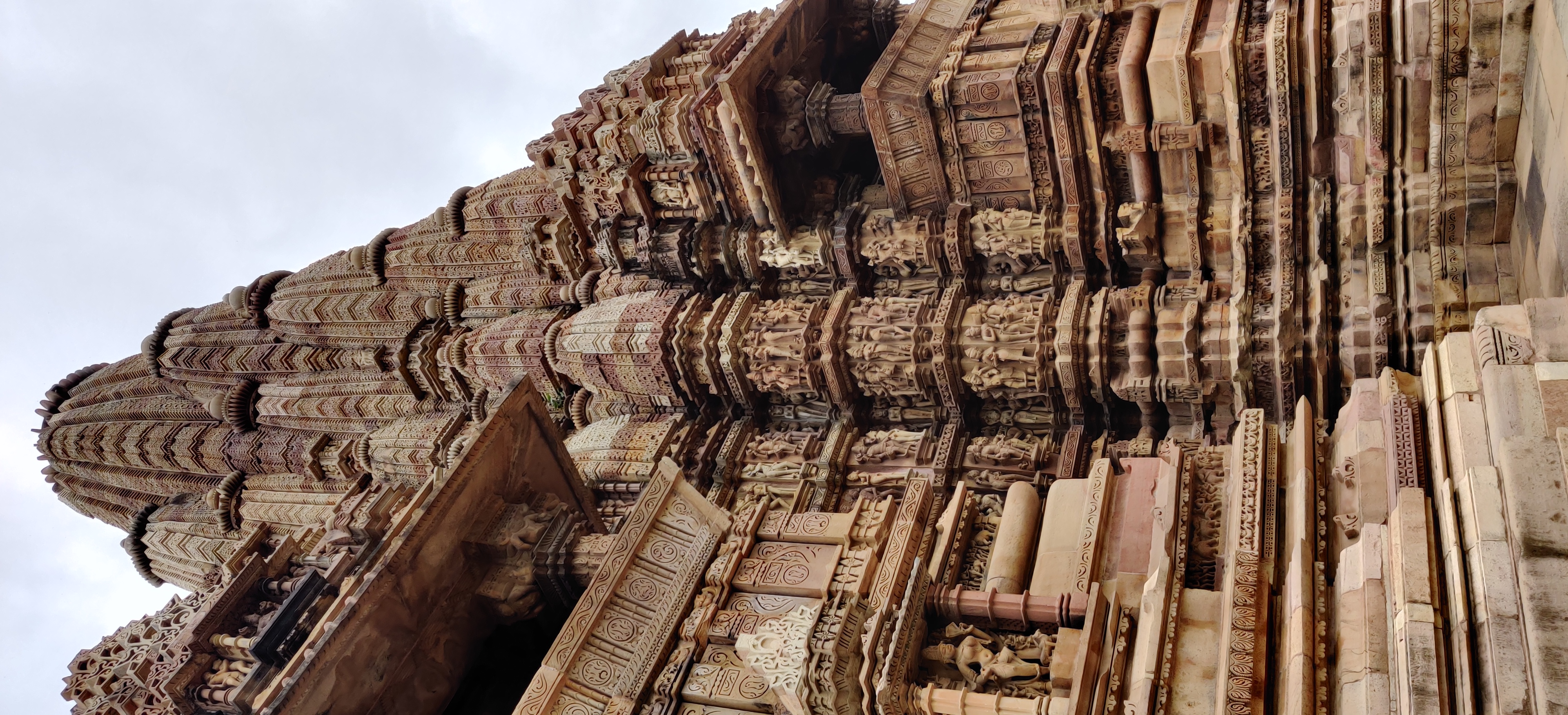
Post updated on: Jun 30, 2021 10:42:35 AM
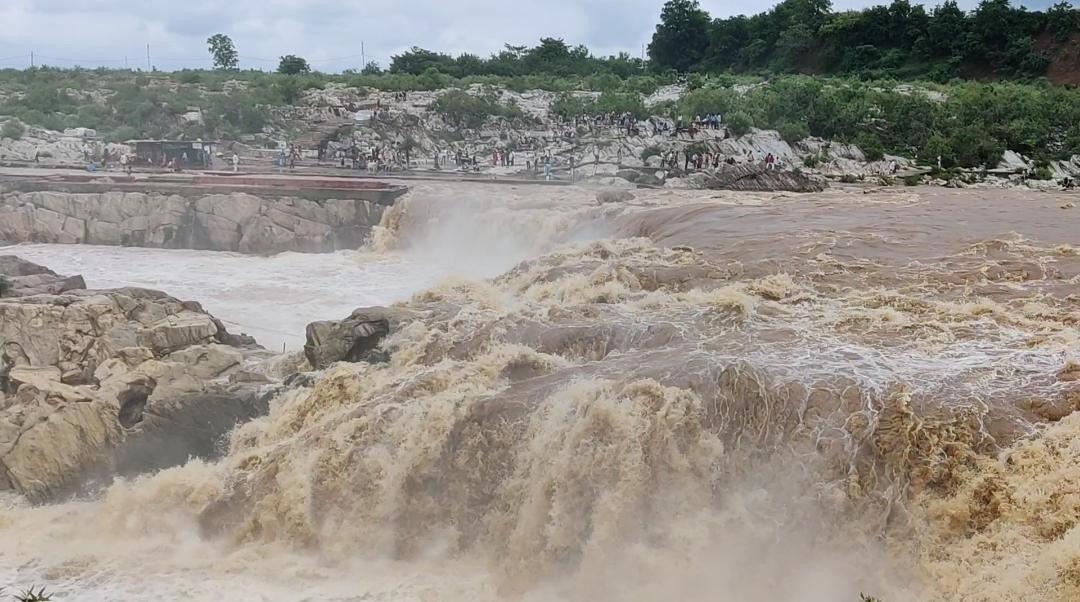
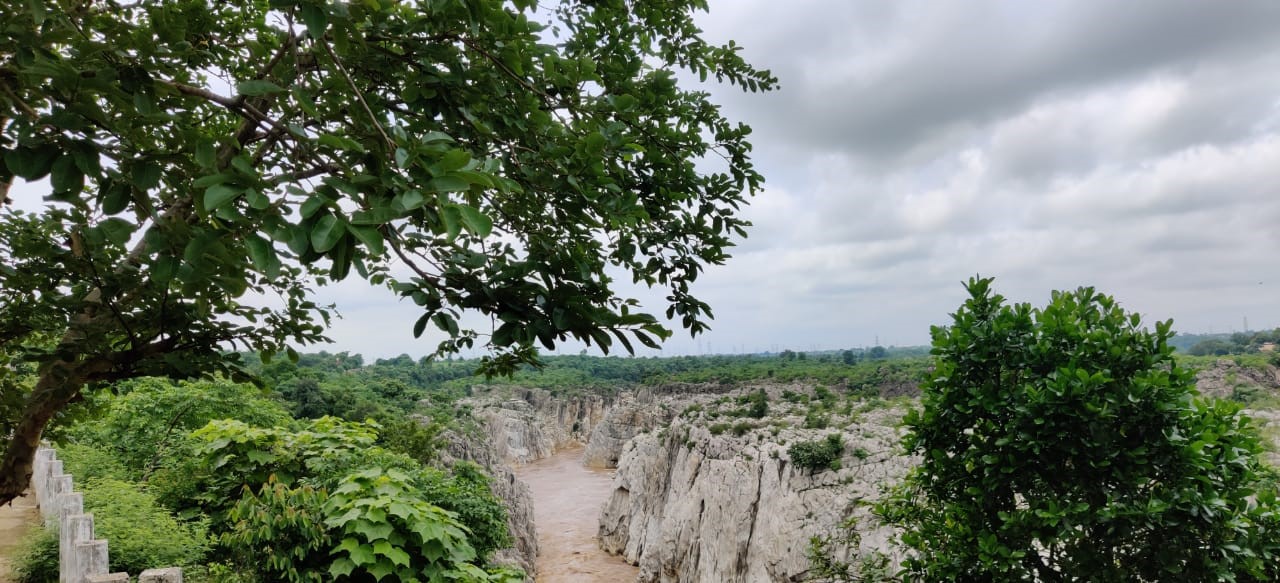
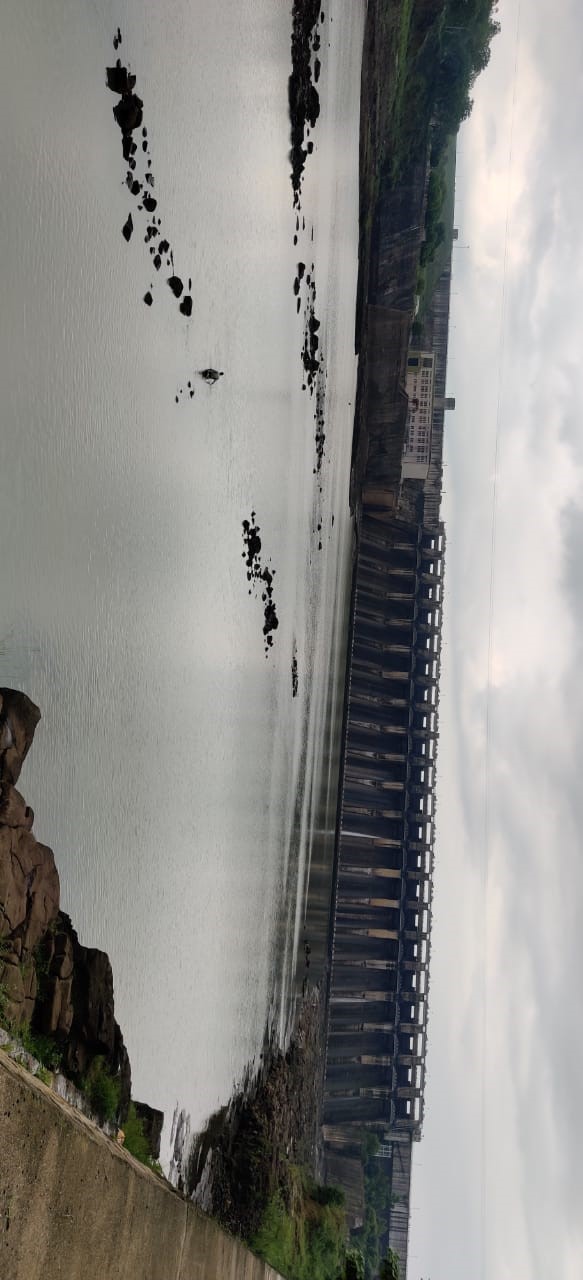

Click here for Part-B
Post updated on: Jun 30, 2021 4:13:56 AM
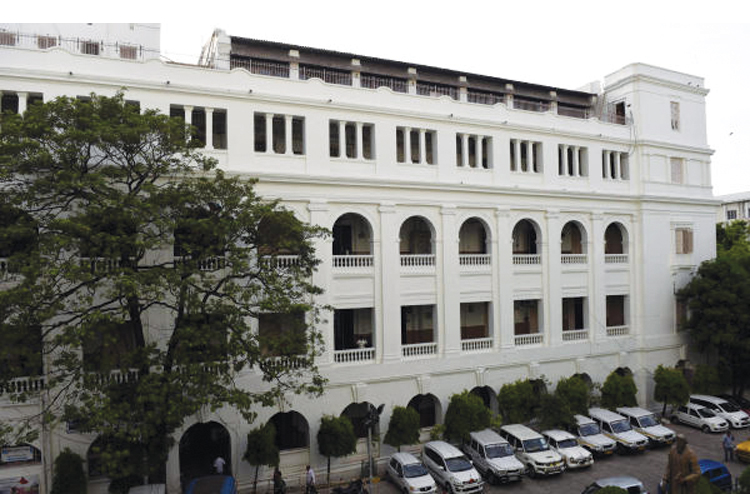
Indian Hospitality Colleges
| State | Hospitality College | Address | District/City | Phone Number |
| Andhra Pradesh | Blooms College of Hotel Management & Catering Technology | Om Nager, Langar House, Hyderabad 500008, Andhra Pradesh | Hyderabad | Ph: 040-23511948, 23522892 |
| Niraj College of Hotel Management & Catering Technology | 44, Uma Nagar, Kundan Bagh Area,Gegumpet, Hyderabad 500016 Andhra Pradesh | Hyderabad | ||
| Regency College of Hotel Management and Catering Technology | Regency Palace, 8-2-677, Road No.12,Banjara Hills, Hyderabad 500034 Andhra Pradesh | Hyderabad | ||
| Shri Shakti College of Hotel Management | Venus Plaza, Adjacent to Airport, Gegumpet, Hyderabad 500016 Andhra Pradesh | Hyderabad | Ph: 27908585 | |
| Sri Padmavathi Women's Polytechnic | Tirupati Chittoor Distt. 517502 Andhra Pradesh | Chittor | ||
| Sri Venkateswara Institute of Hotel Management and Catering Technology | No. 11-20,Renigunta Road, Post Box,No.54,Tirupati 517501, Andhra Pradesh | Tirupati | ||
| Kamala Nehru Colleges of Hotel Management for Women | Sadat manhill, Ameerpet, Hyderabad | Hyderabad | ||
| J.B. Institute of Hotel Management | C/o. Hotel Bhaskara Palace, Banjara Hills, Hyderabad | Hyderabad | ||
| Indian Academy of Catering Tech & Culinary Arts | 6-3-1219/6A, Umanagar, Begumpet, Hyd-16 | Hyderabad | ||
| Institute of Hotel Management | F' Row, Durgabai Deshmukh Colony, Vidyanagar, Hyderabad ? 500007 | Hyderabad | ||
| Hyderabad Institute of Hotel Crafts and Management | 1-11-252/4, 1st Floor, Jabbar Building, Begumpet, Hyderabad-2 | Hyderabad | ||
| SLR College of Hotel Management | Shop # 302, Hamayat Nagar, Hyderabad 500029 | Hyderabad | ||
| Anwarul-Uloom College of Hotel Management and Catering Technology | 8-2-618/1, Road -11, Banjara Hill,Hyderabad | Hyderabad | ||
| Bihar | Indian Institute of Business Management | Budha Marg, Patna 800001 Bihar | Patna | |
| Shanti Sewa Samiti's Indian Institute of Hotel Management | 11, I.A.S. Colony, Kidwaipuri, Patna 800001 Bihar | Patna | ||
| Institute of Hotel Management | Near Ramashish Chowk, Opp. State Circuit House, Hazipur,Vaishali (Bihar) | Vaishali | Phone: 06224- 274937; 275354 | |
| Institute Of Hotel Management & Catering Technology (AICTE Approved) | (Iibm), Patna Campus, Budha Marg, Patna - 800 001. (Bihar) | Patna | ||
| Delhi | Delhi Institute of Hotel Management & Catering Technology, Govt. of NCT | Behind Lady Shri Ram College, Lajpat Nagar-IV, New Delhi 110024 | New Delhi | |
| Guru Gobind Singh Indraprastha University | Kashmere Gate, Delhi 110006 Delhi | New Delhi | ||
| Banarsidas Chandiwala Institute of Hotel Management & Catering Technology | Chandiwala Estate, Maa Anandamayee Ashram Marg, Kalkaji, New Delhi 110019 | New Delhi | 26382276 | |
| Lakshya Bhartee Institute of International Hotel Management | B- 98, Pushpanjali, Enclave, Outer Ring Road, Pitampura, Delhi 110034 | New Delhi | 55155113 | |
| Oberoi Centre of Learning & Development | 7, Sham Nath Marg, Delhi-110 054, India | New Delhi | +91-11-2389 0505 | |
| New Delhi YMCA | Jai Singh Road, New Delhi 110001 | New Delhi | 23360501, 23361910 | |
| R.M. Institute of Hotel Management | N-13 Sainik Farms New Delhi | New Delhi | 26867827, 26966073 | |
| Rai University | No. A-41, MCIE, Mathura Road, New Delhi- 110044 | New Delhi | 33445643, 33467725 | |
| National Council for Hotel Management and Catering Technology | Library Avenue, Pusa Complex, New Delhi ? 110012 | New Delhi | 011- 5787411, 5732429 | |
| Goa | Academy of Culinary Education | Cidade de Goa Beach Resort, Vainguinim Beach, Goa 403004 | Goa | |
| Ann Institute of Hotel Management Nova Cidade Commercial Complex | S 1 Building, 2Nd Floor, Near Chodankar Hospital, Porvorim Bardez. Goa | Goa | 0832-2411350, 3114919 | |
| Gujarat | Vivekanad Institute of Hotel and Tourism Management | N.H-8/B, Kuvadava Road Gujarat | N/A | 0281-2784384, 2784388 |
| Haryana | Institute of Hotel Management, Catering and Nutrition | Department of Tourism, Panipat Haryana | Panipat | |
| Kurukshetra University Department of Tourism & Hotel Management | Kururkshetra 136119 Haryana | Kururkshetra | ||
| North India Institute of Hotel Management | North Park Complex, Near Ghagghar Bridge, Panchkula 134109 Haryana | Panchkula | ||
| Vatel-Oberai & Oberoi | A-23/21 DLF-1, Gurgaon 122022 Haryana | Gurgaon | 0124-5051182 | |
| Allied Institute of Hotel Management And Culinary Arts | sco 43 sector 11 panchkula Haryana - 134112 | Panchkula | 09815988142, 0172-4632947 | |
| Himachal Pradesh | Institute of Hotel Management, Catering & Nutrition Kufri | Shimla 171012 Himachal Pradesh | Shimla | |
| Jharkhand | Birla Institute of Technology | Mesra, Ranchi 835215 Jharkhand | Ranchi | |
| Indian Institute of Science & Management Department of Hotel Management | IISM Campus, Institutional Area, Pundag, Ranchi 834004 Jharkhand | Ranchi | 0651-2242060 | |
| Karnataka | AMC College | 30th Cross, 4th Block, Behind Police Station, Jayanagar, Bangalore 560011 | Bangalore | 080-26638991/992 |
| Acharya Institute of Hotel Management & Catering Technology | Ist Stage, Ist Cross, Peenya Industrial Area, Bangalore 560058 Karnataka | Bangalore | 080-28398699, 28698711 | |
| Administrative Management College | 30th Cross, 4th Block, AMC Building, Jaya Nagar, Bangalore 560011 Karnataka | Bangalore | 26638991 | |
| Army Institute of Hotel Management and Catering Tech. | C/0 ASC Centre and College, PO Agram, Bangalore 560007 | Bangalore | 25714338 | |
| College of Hotel Management | A.B. Shetty Circle, Mangalore 575001 | Mangalore | ||
| Christ College of Hotel Management | Hosur Road, Bangalore 560029 | Bangalore | 080-25526169/164 | |
| Ganga Kaveri Institute of Science and Management | 1699, (43/1), Dr. Rajkumar Road, III Stage, Rajajinagar, Bangalore 560010 | Bangalore | 080-23429266, 23429917 | |
| Garden City College | 628/C, Ist Stage, Indira Nagar, Bangalore 560038 | Bangalore | 080-25288831, 9818702858 | |
| Hindustan Academy of Engineering & Applied Science Campus | P.B. No. 3776, Chinnappanahalli, Marathahali Post, Bangalore 560037 | Bangalore | ||
| Indian Institute of Hotel Management & Catering Tech. | ASC Centre (South) Bangalore 560007 | Bangalore | ||
| K.L.E. Society's S. Nijalingappa College | 2nd Block Rajajinagar, Bangalore 560010 | Bangalore | 080-23325020, 23320910 | |
| Kadandale Krishna Rao Memorial (Woodlands) College of Hotel Management | Woodlands Hotel Complex 5, Raja Rammohan Roy Road, Bangalore 560025 | Bangalore | ||
| Karavali College | NH-17, Near Kottara Chowki Mangalore 575013 | Mangalore | 0824-2455656, 2452931 | |
| Laxmi College of Hotel Management | Laxmi Memorial Education Trust A.J. Towers Balmatta, Mangalore 675002 | Mangalore | ||
| M.S. Ramaiah College of Hotel Management | M.S. Ramaiah Nagar, M.S.R.I.T. Post, Bangalore 560054 | Bangalore | 080-23601829 | |
| Manipal Academy of Higher Education | Madhav Nagar, Manipal 576119 | Manipal | 0825-71201 Ext. 22499, 2574 | |
| Maurya Institute of Hotel Management | No.9, Wheeler Road, Frazer Town, Bangalore 560005 | Bangalore | ||
| Moti Mahal College of Hotel Management | Hotel Moti Mahal Annexe, Falnir Road, Mangalore, 575001 | Mangalore | 0824-2441411 | |
| N.R.I. Hotel Management | No.6, Papareddypalya, Nagarbhavi, Iind Stage, Bangalore 560072 | Bangalore | 23355023 | |
| The Oxford College of Hotel Management C.A. | Site No. 40, Ist Phase, J.P. Nagar, Bangalore 560078 | Bangalore | 26630855 | |
| P.E.S. Institute of Hotel Management | Kumaraswamy Temple Road, Hanumantha Nagar, Bangalore 560050 | Bangalore | 080-26600741 | |
| Presidency College of Hotel Management | No. 28, 7th Cross, Krishna Reddy Colony, Domlur, Bangalore 560071 | Bangalore | ||
| R.N. Shetty College of Hotel Management & Catering Technology | No.4, Kaviraja Marg, Bailappanavar Nagar, Hubli 580029 | Hubli | ||
| St. John's College of Hotel Management | Second Main Road, Vijaynagar Second Stage, Bangalore 560040 | Bangalore | ||
| Sambhram Institutions | Ambabhavani Temple Road, M.S. Palya, Jalahalli East, Bangalore 560097 | Bangalore | 23643618, 23640612 | |
| Sapthagiri College of Hotel Management | Airport Road, Kavoor, Mangalore 575015 | Mangalore | 0824-2481672 | |
| Sarosh Institute of Hotel Management | Administration, Pentagon Complex, Kankanady Pumpwell, Mangalore 575002 | Mangalore | 2245140 | |
| Shree Devi College of Hotel Management | Punjab Building, Lal Bagh, Maina Towers, Ballalbagh, Mangalore 575003 | Mangalore | 0824-2456501, 2456511 | |
| Srinivas College of Hotel Management | Srinivas Building, G.H.S. Road, Mangalore 575001 | Mangalore | 0824-425966, 421566 | |
| T.John College | SG-4, Manipal Centre, # 47, dickenson Road, Bangalore 560042 | Bangalore | 080-25597817, 25092057, 25092057 | |
| Taha College of Management | Armstrong Road, Shivajinagar, Bangalore 560051 | Bangalore | 080-551047, 2215324 | |
| Vidya Vikas Institute of Hotel Management & Catering Technology | 345, Mansara Road, Indira Nagar, Mysore 570010 | Mysore | 0821-2431818, 2449497 | |
| Vignan Education Foundation | 5/3, Hosur Road, Bangalore 560029 | Bangalore | ||
| Welcomgroup Graduate School of Hotel Adminstration | Valley View, Manipal 576119 | Manipal | 08252-571101 | |
| Kerala | Oriental School of Hotel Management | Valley View, Lakkidi 673576, Wynad Distt. Kerala | Wynad | 04936-255716 |
| Institute of Hotel Management and Catering Technology | G.V. Raja Road, Kovalam PO, Thiruvananthapuram 695527 (Kerala) | Thiruvananthapuram | 04723-480078 | |
| Madhya Pradesh | IPS Academy of Hotel Management & Catering Tech | KM 09 Hukmakhedi, Rajendra Nagar, A. B. Road, Indore-452012 | Indore | 0731-5020306, 3090658 |
| Maharashtra | Dr.D.Y.Patil Institute of Hotel Management & Catering Technology | Dr. D.Y. Patil Vidyanagar Sector-7, Nerul, New Mumbai 400706 | New Mumbai | (020) 27420188, 27421095 |
| All India Shri Shivaji Memorial Society's College of HMCT | 55-56, Shivaji Nagar, Pune - 411 005 | Pune | (020) 25533847, 25520488 | |
| Mahatama Gandhi Vidyamandir's College of Hotel Management & Catering Technology | Mumbai Agra Road Panchavati, Nashik-3 | Nashik | (0253) 2516722, 5601203 | |
| Yougantar Education Society's Shri Balasaheb Tirpude College of Hotel Management & Catering Technology | Shri Nasikraoji Tirpude Marg,Civil Lines ,Sadar Nagpur 440001 | Nagpur | (0712) 2550695 | |
| Tuli College of Hotel Management | Near Koradi Naka, Bokhara Road Nagpur 441111 | Nagpur | (0712) 2669054/73, 2669176 | |
| Amro Tourism Academy | SURAJKUND Gat No 64/3 Mumbai-Nashik Highway ( NH3) Rajurbahula , Nashik 422-010 | Nashik | (0253) 651-1223 | |
| AnjumanI, Islam's Institute of Hotel Management & Catering Technology | Naruddin Tyabii Marg, 92 DN Road, Mumbai 400001 | Mumbai | ||
| B.V. Institute of Hotel Management & Catering Technology | Sector 8 CBD Navi Mumbai 400614 | Navi Mumbai | ||
| DINA Institute of Hotel Studies | No. 3, Timanna Niwas, 940/2, Model Colony, Pune 411016 | Pune | 020-5539854, 567666 | |
| Hutatma Karveer Chhatrapati Chuthe Shivali Maharaj Institute of Management Research & Rural Development | Ahmednagar | Ahmednagar | ||
| Indian Institute of Hotel | Management Rauza Bagh, Aurangabad 431001 | Aurangabad | 0240-381104, 381113 | |
| Institute of Hotel Management & Catering Technology | Atey Layout, Nagpur-22 | Nagpur | ||
| Kohinoor-IMI, School of Hospitality Management | 51, Hill Top, Khandala, Distt. Pune | Pune | 02114-72631, 77715/16 | |
| Lad College of Women of Arts. SC. & SMT. R.P. College of Home Sc. & Tech | Shankar Nagar, Nagpur-440001 | Nagpur | ||
| P.A.B. Institute of Hotel Management & Catering Tech. | Bageshree, Dr. Deodhar Compound, Chiplum 415605 | Chiplum | ||
| Razvi College of Hotel Management & Catering Technology | Off. Cater road, Bandra (W), Mumbai 400050 | Mumbai | ||
| Shri B.T. College of Hotel Management | Nagar 440001 | Nagpur | ||
| Sai Shivaji Education Trust's Institute in Travel & Tourism | Thane | Thane | ||
| Orissa | Indian Institute of Hotel Management & Catering | 435, Old Station Square, Bhubaneshwar 751006 | Bhubaneshwar | 0674-2570484 |
| Institute of Hotel Catering & Studies | Jagda, P.O. Jhirpani, Rourkela, Sundargarh 769042 | Rourkela | ||
| National Institute of Hotel Management & Catering | 457, Bomikhal, Bhubaneswar, 751010 | Bhubaneshwar | ||
| Women's Polytechnic | Berhampur | Berhampur | ||
| Rajasthan | Maharishi Arvind Institute of Science and Management | Bharati Path, Ambabari Circle, Ambabari, Jaipur | Jaipur | 0141-3345487 |
| Sikkim | Institute of Hotel Management, Catering Tech. & Applied Nutrition | P.S. Road, Gangtok, Sikkim 737101 | Gangtok | 03592-2350, 228239 |
| Tamil Nadu | Asan Memorial Institute of Hotel Management & Catering Technology | Tambaram-Velachery Road, Jaladampet, Chennai 601302 | Chennai | |
| Bhaktavatsalam Memorial College for Women | Korattur, Chennai 60080 | Chennai | 044-26250899, 2624 2699 | |
| Bharat College of Science and Management | Near New Bus Stand, Trichy Road, Thanjavur 613005 | Thanjavur | 04362-227937, 228081 | |
| C.M.S. Science and Commercial College | Coimbatore 641006 | Coimbatore | 0422-2866465, 2867496 | |
| Canan School of Catering & Hotel Management | 1/75, Poonamallee High Road, Nerkundram, Chennai 600107 | Chennai | 24872689, 24873189 | |
| Chennai National College of Arts & Sciences Parthipattu | Sriperumbathur | Sriperumbathur | ||
| Cheran Artas & Sciences College | Thittupparaj, Kangayam - Erode 638701 | Erode | 04257-2243316, 2243709 | |
| Empee Institute of Hotel Management & Catering Technology | D-103, Aruna Complex, Anna Nagar East, Chennai 600102 | Chennai | 26631843, 26630179 | |
| Food Craft Institute | Thuvakudi, Tiruchirapalli 620015 | Tiruchirapalli | ||
| Holy Crescent School of Catering | 50, Trunk Road, Poonamalle, Chennai 600056 | Chennai | ||
| The Hotel Academy | No. 114, Pondy Bazaar, Chennai 600017 | Chennai | 044-28152391/92, 52124431 | |
| Indian Institute of Catering Technology & Hotel Management | No-22, Shivaji Nagar, Near Membalam, Thanjavur 613001 | Thanjavur | 04362-232567/ 278776 | |
| Jaya College of Arts and Science | C.T.H. Road, Thiruninravur, Chennai 602024 | Chennai | 044-2639 0808 / 2634 0953 | |
| Kodaikanal Christian College | Prakasapuram P.O, Paradise Hill, Kodaikanal 624104 | Kodaikanal | 04542-242216, 242217 | |
| League Institute of Catering and Hotel Management | No.105, Vinayagapuram, Iind Street Arumbakkam, Chennai 600106 | Chennai | 044-24752570, 24755185 | |
| Oriental Institute of Catering Technology & Hotel Management | 22-A, Chinnakanmal Street, Near Post & Telegraph Office, Tallakulam, Madurai 625002 | Madurai | 0452-2522005 | |
| Madurai Kamaraj University College | Madurai -625002 | Madurai | ||
| Maharaj Womem's College | Perunthurai, Erode 638052 | Erode | ||
| Mohamed Sathak College of Arts and Science | Sholinganallur, Chennai - 600 119 | Chennai | 044-24501578, 24502576, 24502577 | |
| Merit Swiss Asian School of Hotel Management | 22, Havelock Road, Ooty 643001 | Ooty | 0423-2443601, 2442486 | |
| Measi Institute of Hotel Management & Catering Technology | 87, Peters Road, Royapettah, Chennai 600014 | Chennai | ||
| M.G.R. Institute of Hotel Management & Catering Technology | Lakshmi Nagar, Ist Main Road, Sri Devi Garden, Valasaravakkam, Chennai 600087 | Chennai | 24869004, 24869006 | |
| M.M.A. College of Catering Technology & Hotel Management | No.12, Santhome High Road, Mylapore, Madras 600004 | Chennai | ||
| The Monarch International College of Hotel Management | Hovelock Road, Ooty 643001 | Ooty | 0423-2444408/ 18/20 | |
| P.G Arts & Science College | Periyampalli, Dharmapuri-636 701 | Periyampalli | ||
| P.G.P College of Arts & Science | Pillaikalathoor, Namakkal - 637 206 | Namakkal | 04286-567759 | |
| P.S.G Arts & Science College | Avinashi Road, Coimbatore-641014 | Coimbatore | 0422-2573386, 2575622, 2591841 | |
| Paradise Academy of Catering & Hotel Management Prakasapuram | Kodiakanal 624104 | Kodaikanal | ||
| Pavendar Bharathidasan College of Arts & Science | Mathur, Pudukottai 622515 | Pudukottai | ||
| Pioneer International School of Hotel Management | 18, Chikkanna Chettiar Street, Tirupur 641604 | Tirupur | 0421-743091 | |
| Poonga College of Arts & Science | No. 10-13A, Babu Rajendra Prasad Road, West Mambalam, Chennai - 600 033 | Chennai | ||
| Ratnavel Subramaniam College of Arts & Science | Coimbatore 641402 | Coimbatore | ||
| S.N.R. Sons College | Coimbatore 641 006 | Coimbatore | 0422- 256 2788, 256 0387 | |
| S.R.M Arts & Science College | Ramapuram, Chengalpattu(Dist) - 603205 | Ramapuram | ||
| S.R.M Institute of Hotel Management | No 3, Veerasamy Street,West Mambalam, Chennai - 600 033 | Chennai | 044-2474 7231, 2474 7234 | |
| Sankara College of Science & Commerce | Saravanampatty, Coimbatore - 641 035 | Coimbatore | 0422 - 2666491, 2665934 | |
| Sathyabama Institute of Hotel Management and Catering Technology | Jeppiaar Educational Trust, Jeppiaar Nagar, Old Mamallapuram road, Chennai 60019 | Chennai | ||
| Shevaroys Institute of Catering Technology and Hotel Management | Yercaud Hills 636601 Salem Distt. | Salem | 04281-222383 | |
| Small Industries Service Institute | 65/1, G.S.T. Road, Guindy, Chennai 32 (GOI, Ministry of Industry) | Chennai | ||
| Sri Amman Arts and Science College | Thayarpalayam, Erode 638102 | Erode | ||
| Subbalakshmi Lakshmipathy College of Science | TVR Nagar, Aruppukottai Road, Madurai - 625 022 | Madurai | 0452-2690616, 2690623 | |
| Swiss Management Academy R.S.B. Towers | 1274 MTP Road, Near Saibaba Temple, Coimbatore 641043 | Coimbatore | 0422-5533389, 5382563 | |
| V.G.P. Hotel Management Academy | Parijatham Salai, Uthandi, Sholinganalore PO Chennai 60019 | Chennai | 044-4490486, 5857298 | |
| V.J.P. College of Catering Hotel Management | 89/1, Devar Colony, Ist Cross Thillai Nagar, Trichy 620018 | Trichy | 7600094 | |
| V.L.B Janaki Ammal College of Arts and Science | Kovaipudur, Coimbatore - 641 042 | Coimbatore | 0422 - 2607779, 2607288 | |
| Vel's Institute of Hotel Management | Velan Nagar, P.V. Vaithiyalingam Road, Pallavaram, Chennai - 600 117 | Chennai | 044 - 22415862, 2236 2712 | |
| Velankanni Malathy Panicker College of Arts & Science | Kovur, Chennai 603205 | Chennai | ||
| Vinayagam Mission Arts & Science College | Salem-636001 | Salem | ||
| Uttar Pradesh | Allahabad Agricultural Institute | Allahabad 211007 | Allahabad | 0532-2684281, 2684284 |
| Babu Banarasidas National Institute of Technology and Management | Lucknow | Allahabad | ||
| Bundelkhand University, School of Tourism & Management | Kanpur road, Jhansi 284 128 | Jhansi | (0517) 321158 | |
| Ch. Charan Singh University | Meerut 200005 | Meerut | +91 121 2760551, 2760554 | |
| Graduate School of Business & Administration (GSBA) | Plot No. HS-02, Block - F, Sector - Alpha 2, Greater Noida - 201306 | Greater Noida | 0120-2320521/22/23/24 | |
| Institute of Hotel Management, Catering Technology and Applied Nutrition | IHM & C HOUSE, 11 R. A. Lines, Dogra Temple Road, The Mall, Meerut Cantt-250001 | Meerut | 0121-2643590, 2656096 | |
| Institute of Hotel & Tourism Management | C/o Devidayal Aluminimum Industries (P) Ltd. 149, G.T. Road, Sahibabad, Ghaziabad 201005 | Ghaziabad | 0120-3090652, 2112025 | |
| International Institute of Management & Technology | Mall Road, Meerut Cantt. | Meerut | 0121-642006 | |
| J.P Institute of Hotel Management & Catering Technology | P.O Rajpura, Mawana Road, Meerut 250001 | Meerut | 0121-2621515, 2620433 | |
| M J P Rohilkhand University Faculty of Management Studies | Dori Lal Agarwal Marg, Bareilly 243001 | Bareilly | 0581-527282, 427088, 527263, 527286 | |
| Shivgarh Metropolitan Institute of Hotel Management & Catering Technology | Vill: Kankaha, Teh: Mohanlal Ganj, Distt: Lucknow | Lucknow | 0522-2821067 | |
| Uttaranchal | Amrapali Institute of Hotel Management | Civil Lines, Nainital Road, Haldwani | Haldwani | |
| Govt. Institute of Hotel Management & Catering | Dehradun | Dehradun | 0135-2728662 | |
| Govt. Institute of Hotel Management & Catering | Almora | Almora | 05962-230539 | |
| Institute of Media Management and Tech. | 113/1-2, Raipur road, Dehradun 248001 | Dehradun | 0135-2741979, 2747159 | |
| National Institute of Hotel Management | 29, Dilaram Bazar, Rajpur Road, Dehradun 248001 | Dehradun | 0135-2745196, 2743183 | |
| RAM Institute of Hotel Management & Catering Tech. | Niranjanpur, Saharanpur Road, Dehradun | Dehradun | 0135-2749500, 3125950 | |
| West Bengal | Durgapur Educational Society's Institute of Hotel Management | B-312, Michael Faraday Street, City Centre, Durgapur 713216 | Durgapur | 0343-2547906 |
| I.I.A.S. | 41, Sevoke road, Near Gurudwara,Siliguri 734401 | Siliguri | ||
| Institute of Advanced Management (IAM) | AE 486, Salt Lake, Kolkata 700064 | Kolkata | 033-23377726, 23596065 | |
| International Institute of Hotel Management | International Tower, X-1, 8/3, Block EP, Sector-V, Salt Lake, Kolkata | Kolkata | 23577550-9 | |
| NIPS School of Hotel Management | EC 98, Sector-I, Salt Lake, Kolkata 700064 | Kolkata | 23586476, 23343079 |
Post updated on: Jun 27, 2021 2:46:22 PM
Institute of Indian Council of Agricultural Research in India
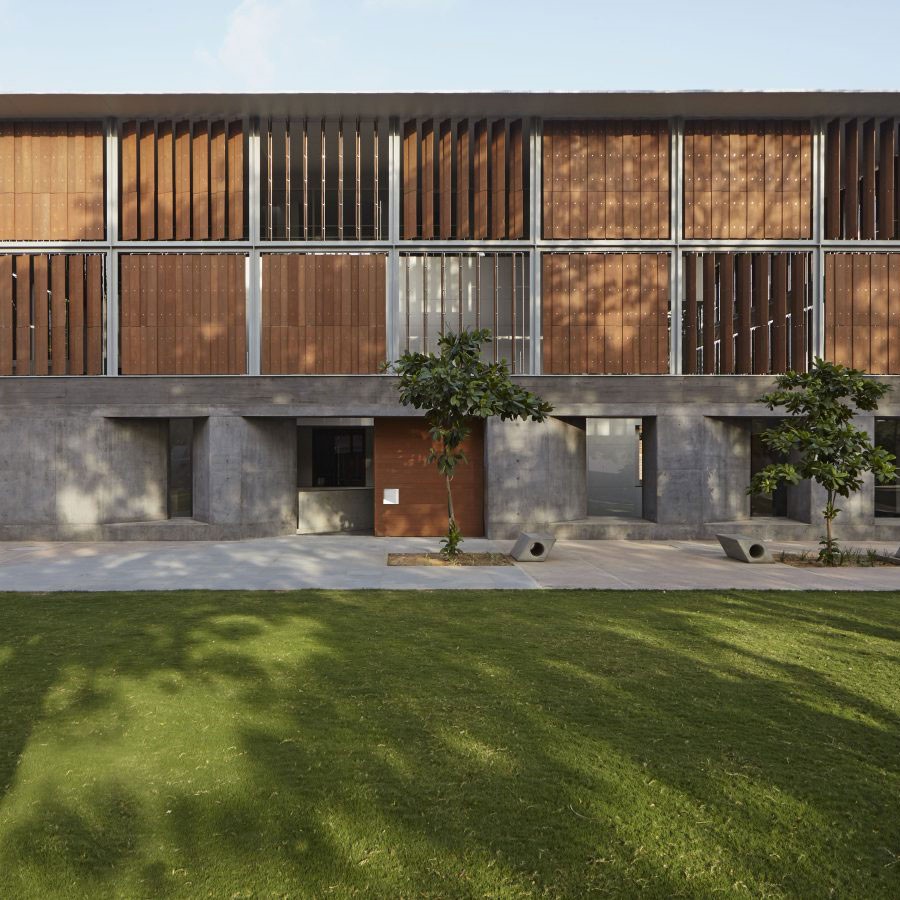
Insitutes of Indian Council of Agricultural Research
| Institute | City |
| Indian Agricultural Research Institute | New Delhi |
| Indian Agricultural Statistics Research Institute | New Delhi |
| National Centre for Agricultural Economics and Policy Research | New Delhi |
| Indian Institute of Horticultural Research | Bangalore |
| Central Institute for Cotton Research | Nagpur |
| Directorate of Wheat Research | Karnal |
| National Research Centre for Groundnut | Junagadh |
| National Research Centre for Rapeseed-Mustard | Bharatpur |
| Institute of Pulses Research | Kanpur |
| Project Directorate of Biological Control | Bangalore |
| Directorate of Oilseeds Research | Hyderabad |
| Directorate of Rice Research | Hyderabad |
| National Research Centre for Sorghum | Hyderabad |
| Indian Institute of Vegetable Research | Varanasi |
| Central Institute of Sub-tropical Horticultre | Lucknow |
| Indian Lac Research Institute | Ranchi |
| Central Institute Research on Cotton Technology | Mumbai |
| Central Rice Research Institute | Cuttack |
| Indian Institute of Sugarcane Research | Lucknow |
| All-India Coordinated Research Project on Rice | N.A. |
| All-India Coordinated Research Project on Potato Central Potato Research Institute, Shimla, Himachal Pradesh) | Shimla |
| All-India Coordinated Research Project on Nematodes | N.A. |
| All-India Coordinated Research Project on Cotton (AICRP on Cotton, Regional Research Centre CICR, Coimbatore, Tamilnadu ) | Coimbatore |
| All-India Coordinated Research Project on Whitegrubs | Dausa (Rajasthan) |
| All-India Coordinated Research Project on Sunflower, UAS | Raichur |
| All-India Coordinated Research Project on Agril. Meteorology (CRIDA) | Hyderabad |
| Zonal Co-ordinator, Zone-VI, Central Arid Zone Research Institute (CAZRI) | Jodhpur |
| All-India Coordinated Research Project on Mustard | Bharatpur |
Intergovernmental Organizations in India
Intergovernmental Organizations
| Intergovernmental Organizations | City/Town | State | Address | Phone Number | Website | |
| CODEX India | New Delhi | Delhi | National Codex Resource Centre Ministry of health and Family Welfare Directorate General of Health Services Nirman Bhavan, New Delhi-110011 | N/A | http://codexindia.nic.in/ | Codex-India@nic.in |
| United Nations Information Center | New Delhi | Delhi | United Nations Information Centre, 55 Lodi Estate, New Delhi 110003, | 91 11 24628877, 24623439 | http://www.un.org.in/ | unicindia@unicindia.org |
| United Nations Development Fund for Women (UNIFEM) | New Delhi | Delhi | 223, Jor Bagh, New Delhi - 110 003 | 24698297, 24604351, 24622136, 24627612 | http://www.unifem.org.in/ | chandi.joshi@undp.org |
| United Nations Development Programme (UNDP) | New Delhi | Delhi | United Nations Development Programme (UNDP) 55 Lodhi Estate Post Box No. 3059 New Delhi Pin Code - 110 003 | 91 11 46532333 | http://www.undp.org.in/ | webadmin.in@undp.org |
| United Nations Educational Scientific and Cultural Organisation (UNESCO) | New Delhi | Delhi | UNESCO House, B-5/29, Safdarjung Enclave, New Delhi - 110 029 | 91 11 26713000, 26713001/ 2 | http://unescodelhi.nic.in | newdelhi@unesco.org |
| United Nations Population Fund (UNFPA) | New Delhi | Delhi | P.O. Box No. 3059, 55, Lodhi Estate, New Delhi - 110 003 | 91 11 24628877,24627612, 24628078,24619393 | www.unfpa.org.in | webadmin.in@undp.org |
| World Bank | New Delhi | Delhi | The World Bank, 70, Lodhi Estate, New Delhi - 110 003 | 91 11 24617241, 24619491 | www.worldbank.org.in | |
| World Health Organisation (WHO) | New Delhi | Delhi | World Health Organisation (WHO), Regional Office for South-East Asia, World Health House Indraprastha Estate,Mahatama Gandhi Marg, New Delhi 110 002 | 91 11 23370804, 23317805-23 | http://www.searo.who.int/ | PandeyH@whosea.org |
| United Nations Information Centre (UNIC) | New Delhi | Delhi | 55 Lodi Estate New Delhi 110 003 | 91-11-24620293 | http://www.unic.org.in/ | unicindia@unicindia.org |
| UNAIDS | New Delhi | Delhi | C/o, II C, 40 Lodhi Estate, New Delhi - 110 003 | 24628877 24649895 | www.unaids.org.in | N.A |
| UNICEF | New Delhi | Delhi | 73, Lodhi Estate, New Delhi - 110 003 | 24690401, 24691401, 24627521, 24691410 | india@unicef.org | india@unicef.org |
| United Nations Office on Drugs and Crime (UNODC) | New Delhi | Delhi | EP 16/17, Chandergupta Marg, Chanakyapuri, New Delhi - 110 021 | 24104970-73 24104962, 24104963 | www.undcp.org/india | fo.india@unodc.org |
| UN High Commissioner of Refugees (UNHCR) | New Delhi | Delhi | 14, Jor Bagh, New Delhi - 110 003 | 24699302, 24616038, 24620137 | www.unhcr.org | indne@unhcr.cb |
| ILO | New Delhi | Delhi | East Court, IIIrd Floor, India Habitat Centre, Lodhi Road | 24602101-04, 24602111 | N.A | DELHI@ilodel.org.in |
| USAID | New Delhi | Delhi | USAID, American Embassy. New Delhi-110021 | 91-11-2419-8000 | http://www.usaid.gov/in/ | marcusjohnson@usaid.gov |
| United Nations Volunteers UNV | New Delhi | Delhi | C/o UNDP, Post Box 3059, 55 Lodhi Estate, New Delhi - 110 003 | 24628877, 24628330, 24627612 | www.undp.orgin/unv | unv.india@undp.org |
| United Nations Population Fund UNFPA | New Delhi | Delhi | P.O. Box No. 3059, 55, Lodhi Estate, New Delhi - 110 003 | 24628877, 24627612, 24628078 | www.unfpa.org.in | india@unfpa.org.in |
| United Nations World Food Programme UNWFP | New Delhi | Delhi | 53, Jor Bagh. New Delhi- 110003 | 91-11-24694381 , 11-24627109 | www.wfp.org.india | reqistry@wfp.ernet.in |
| United Nations Operation in Cote d'Ivoire UNOCI | N.A. | N.A. | N.A. | N.A. | N.A. | N.A. |
| United Nations Country Team UNCT | N.A. | N.A. | N.A. | N.A. | N.A. | N.A. |
| UN Military Observer Group in India and Pakistan (UNMOGIP) | New Delhi | Delhi | 1/AB, Purana Quila Road, New Delhi - 110 001 | 23387706, 23386661 23384052 | N.A | unmogip@del12.vsnl.net.in |
| World Food Programme (WFP) | New Delhi | Delhi | 2 Poorvi Marg, Vasant Vihar, New Delhi - 110 057 | 26150000, 26150011, 26150019 | www.wfp.org.india | WFP.NewDelhi@wfp.org |
| United Nations Conference on Trade and Development (UNCTAD) | New Delhi | Delhi | The Ambassador Hotel, Room No. 421/ 419/ 417 Sujan Singh Park, New Delhi - 110 003 | 24635036, 24635054-55, 24635000 | www.unctadindia.org | veenajha@unctadindia.org |
| Food and Agricultural Organisation (FAO) | New Delhi | Delhi | 55, Max Muellar Marg, New Delhi - 110 003 | 24628877, 24693060, 24620115 | www.fao.org | fao-ind@field.fao.org |
| Asian and Pacific Centre for Transfer of Technology (APCTT) | New Delhi | Delhi | APCTT Building, P.O. Box 4575, Qutab Institutional Area, New Delhi - 110 016 | 26966509, 26856274 | www.apctt.org | postmaster@apctt.org, infocentre@apctt.org |
| UN Information Centre (UNIC) | New Delhi | Delhi | 55, Lodhi Estate, New Delhi - 110 003 | 24623439, 24628877, 24620293 | www.unic.org.in | feodor@giasd101.vsnl.net.in |
| International Monetary Fund (IMF) | New Delhi | Delhi | Suite 121, Taj Palace Hotel, Sardar Patel Marg, New Delhi - 110 021 | 24602101-04, 24602111 | www.imf.org | DELHI@ilodel.org.in |
Inter-Governmental Regional Organisations in India
Inter Governmental Regional Organisations
| Inter-Governmental Regional Organisations | City/Town | State | Address | Phone Number | Website |
| Bay of Bengal Programme Inter-Governmental Organisation (BOBP-IGO) | Chennai | Tamil Nadu | Bay of Bengal Programme | 91 44 24936188, | bobpysy@md2.vsnl.net.in |
| Post Box No 1054 | 91 44 24936294 | ||||
| 91, Saint Mary's Road | |||||
| Abhiramapuram | |||||
| Chennai ? 600 018 | |||||
| Tamil Nadu, India | |||||
| SAARC Documentation Centre (SDC) | New Delhi | Delhi | SAARC Documentation Centre | 091-11-26863609 | sdc@niscair.res.in |
| At NISCAIR | |||||
| 14, Satsang Vihar Marg | |||||
| New Delhi - 110 067 | |||||
| India |
Post updated on: Jun 27, 2021 2:38:00 PM
IGNOU Regional Centers in India
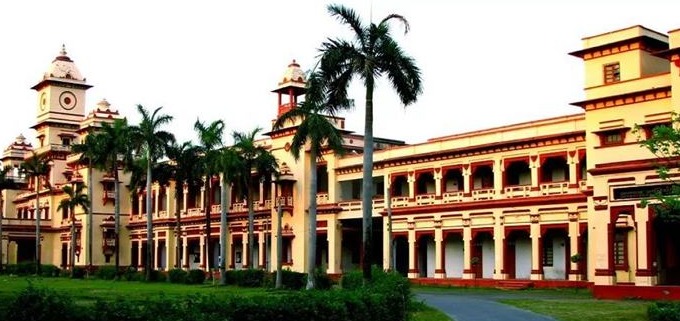
IGNOU Regional Centers
| Center and Code | City/ District | State | Address |
| Hyderabad (01) | Hyderabad | Andhra Pradesh | Sh. T.R. Srinivasan Regional Director IGNOU Regional Centre H No. 3-5-909 Near Narayanguda Bus Stop Himayat Nagar Main Road Himayatnagar Hyderabad - 500029 Andhra Pradesh. |
| Patna (05) | Patna | Bihar | Dr. D. N. Sharma Regional Director IGNOU Regional Centre-Patna 2nd floor, BISCOMAUN Towar, West Gandhi Maidan Patna- 800 001. Bihar. |
| Delhi '1'( 07) | New Delhi | Delhi. | Dr. Masood Parveez Regional Director IGNOU Regional Centre 52, Tughlakabad Institutional Area Near Batra Hospital New Delhi-110 062 Delhi. |
| Ahmedabad (9) | Ahmedabad | Gujarat | Dr. (Mrs) Kalpana Mishra Regional Director IGNOU Regional Centre Opp. Nirma Institute of Technology Sarkhej - Gandhinagar Highway Chharodi Ahmedabad-382481 Gujarat. |
| Karnal (10) | Karnal | Haryana. | Dr. R C. Sharma Regional Director IGNOU Regional Centre Old Govt. College Campus Railway Road, (Opp. Liberty) Karnal - 132001 Haryana. |
| Shimla (11) | Shimla | Himachal Pradesh. | Dr. D.B. Negi Regional Director IGNOU Regional Centre Rain Basera Building Khalini Shimla-171 002 Himachal Pradesh. |
| Jammu (12) | Jammu | Jammu & Kashmir. | Dr. K.K. Gautam Regional Director IGNOU Regional Centre, P.B. No. 106 1st Floor, Aurobindo Block Govt. SPMR College of Commerce, Canal Road, Jammu ? 180 001 Jammu & Kashmir. |
| Bangalore (13) | Bangalore | Karnataka | Dr. B.P.R. Narasimha Rao Regional Director IGNOU Regional Centre No. 293, 39th Cross 8th Block, Jaya Nagar Bangalore-560 082 Karnataka. |
| Cochin (14) | Cochin | Kerala. | Sh. V. Vasudevan Regional Director IGNOU Regional Centre Kaloor Cochin-682 017 Kerala. |
| Bhopal (15) | Bhopal | Madhya Pradesh. | Dr. K.S. Tiwari Regional Director IGNOU Regional Centre Sanchi Complex Opp. Board of Secondary Education Shivaji Nagar Bhopal - 462 016 Madhya Pradesh. |
| Pune (15) | Pune | Maharashtra. | Dr. B.S. Sudhindra Regional Director IGNOU Regional Centre 1st Floor, MSFC Building 270, Senapati Bapat Road Pune - 411016.Maharashtra. |
| Bhubaneshwar (21) | Bhubaneshwar | Orissa. | Dr. S.S. Jena Regional Director IGNOU Regional Centre C-1, Institutional Area Bhubaneshwar-751 013 Orissa. |
| Jaipur (23) | Jaipur | Rajasthan. | Dr. T.U. Fulzele Regional Director IGNOU Regional Centre 70/79-84, Sector - 7, Patel Marg Mansarovar Jaipur - 302020. Rajasthan. |
| Chennai (25) | Chennai | Tamil Nadu. | Dr. (Mrs) K. Soundravalli Regional Director IGNOU Regional Centre C.I.T. Campus Taramani Chennai- 600 113 Tamil Nadu. |
| Lucknow (27) | Lucknow | Uttar Pradesh. | Dr. Amit Chaturvedi Regional Director IGNOU Regional Centre B-1/33, Sector-H Aliganj Aliganj Lucknow-226 024 Uttar Pradesh. |
| Kolkata ( 28) | Kolkata | West Bengal. | Dr Sujit Kr. Ghosh Regional Director IGNOU Regional Centre Bikash Bhawan 4th floor, North Block Bidhan Nagar Kolkata-700 091 West Bengal. |
| Delhi '2' (29) | New Delhi | Delhi. | Dr. Venugopal Reddy Regional Director IGNOU Regional Centre Gandhi Smriti and Gandhi Samiti Rajghat New Delhi - 110002 Delhi. |
| Srinagar (30) | Srinagar | Jammu & Kashmir. | Dr. Abdul Gani Regional Director IGNOU Regional Centre Mantoo House Raj Bagh Near Masjid Al-Farooq Srinagar ? 190 008 Jammu & Kashmir. |
| Dehradun (31) | Dehradun | Uttaranchal. | Dr. Rajendra Gujral Regional Director IGNOU Regional Centre Nanoor, Khera, Tapovan, Raipur Road, Dehradun ? 248 001Uttaranchal. |
| Ranchi (32) | Ranchi | Jharkhand. | Dr. V.P. Rupam Regional Director (I/c) IGNOU Regional Centre 457/A, Ashok Nagar Ranchi - 834002 Jharkhand. |
| Khanna (22) | Khanna | Punjab. | Sh. Ranjan Kumar Regional Director IGNOU Regional Centre I.T.I. Building Bulepur (District Ludhiana) Khanna - 141401.Punjab. |
| Raipur (35) | Raipur | Chhattisgarh. | Dr. P. Ashok Kumar Regional Director IGNOU Regional Centre Rest House & E.M. Office Hall Sector I Shankar Nagar Raipur Chhattisgarh. |
| Jabalpur (41) | Jabalpur | Madhya Pradesh. | Dr. U.C. Pandey Assistant Regional Director IGNOU Sub-Regional Centre IGNOU SC Building 2nd Floor, Raj Sekhar Bhawan Arts Building Rani Durgavati Vishvavidhyalaya Campus Pachpedhi, Jabalpur - 482001 Madhya Pradesh. |
| Koraput (44) | Koraput | Orissa. | Sh. Kartik Dalai Assistant Regional Director IGNOU Sub-Regional Centre District Agriculture Office Road Koraput - 764020 Orissa. |
| Port Blair (2) | Port Blair | Andaman & Nicobar Islands | Regional Director IGNOU Regional Centre JNR Mahavidyalaya Port Blair -744104 Andaman & Nicobar Islands |
| Guwahati (04) | Guwahati | Assam. | Ms. Namrata Hagjer IGNOU Regional Centre Navagiri Road Ist Bye-Lane Chandmari |
| Shillong (18) | Shillong | Meghalaya. | Dr. A.S. Guha IGNOU Regional Centre Sunny Lodge Nongthyammi Nongshillang |
| Gangtok (24) | Gangtok | Sikkim | Sh. Sanjib Kumar Kataky IGNOU Regional Centre Tadong |
| Itanagar (03) | Itanagar | Arunachal Pradesh. | Dr. Ila Das IGNOU Regional Centre 'Hornhill Complex' 'C' Sector (Near Central School) Naharlagun |
| Imphal ( 17) | Imphal | Manipur | Sh. Joseph Somi Regional Director (I/c) IGNOU Regional Centre Asha Jina Complex North AOC |
| Aizawl (19) | Aizawl | Mizoram | Dr. S.R. Zanunthara IGNOU Regional Centre Lalbuaia Building M.G. Road Khatla (Near Central YMCA Office) |
| Agartala( 26) | Agartala | Tripura | Dr. K.S. Chakraborty IGNOU Regional Centre M.B.B. College Compound P.O. Agartala College |
| Kohima ( 20) | Kohima | Nagaland. | Dr. T. Iralu N.H. 39, Opp. Dzuvuru I.O.C. (Mhonkhola) Kohima - 797001 Nagaland. |
Institutes in Rural Development in India
Institutes in Rural Development
| Name | Address | District | State | Telephone |
| Administrative Staff College ( Andrapradesh) | Bella Vista, Raj Bhawan Road, Hyderabad 500082 | Hyderabad | AndraPradesh | 040-2331-0952 and 040-23310852 |
| CENTRE FOR ECONOMIC AND SOCIAL STUDIES ( AndraPradesh) | Nizamiah Obeservatory Campus, Begumpet, Hyderabad?500 016 Andhra Pradesh | Hyderabad | AndraPradesh | 91-40-23402789, 23416780, 23416610/11/12/13 |
| INSTITUTE OF PUBLIC ENTERPRISE ( AndraPradesh) | Osmania University Campus, Hyderabad 500 007 | Hyderabad | AndraPradesh | 040-27098145, 27098937 |
| JAWAHARLAL NEHRU INSTITUTE FOR DEVELOPMENT BANKING ( AndraPradesh) | Gachi Bowli, Hyderabad 500032, Andhra Pradesh | Hyderabad | AndraPradesh | 040-23000237/8/9 |
| NATIONAL INSTITUTE OF AGRICULTURAL EXTENSION MANAGEMENT (MANAGE) ( AndraPradesh) | Rajendranagar ,Hyderabad 500 030, Andhra Pradesh | Hyderabad | AndraPradesh | 040 - 24016702-709 |
| NATIONAL INSTITUTE OF RURAL DEVELOPMENT ( AndraPradesh) | Rajendranagar Hyderabad 500 030 | Hyderabad | AndraPradesh | 040-24008526 |
| STATE BANK INSTITUTE OF RURAL DEVELOPMENT ( AndraPradesh) | P.O.Box No: 2, Gachi Bowli Old Bombay Road, Lingampally, Hyderabad 500 133 | Hyderabad | AndraPradesh | NA |
| ADMINISTRATIVE TRAINING INSTITUTE ( Arunachal Pradesh) | Government of Arunachal Pradesh, D-Sector , District Papumpura Naharlagun 791110 , Arunachal Pradesh | Papumpura | Arunachal Pradesh | 0360-2244383 (off), 2211259 (Res) |
| ASSAM ADMINISTRATIVE STAFF COLLEGE ( Assam) | Jawaharnagar , P.O.Khanapara, Guwahati 781 022, Assam | Guwahati | Assam | 0361-2361547, 2363325 |
| OMEO KUMAR DAS INSTITUTE OF SOCIAL CHANGE AND DEVELOPMENT ( Assam) | 39, Sapta Swahid Path Sarumotoria, Dispur, GUWAHATI- 781006 | Kamrup | Assam | 0361 ? 2334209, 2231956 |
| Institute Of Rural Management (Gujarat) | Post Box No. 60, Anand 388 001, Gujarat | Anand | Gujarat | 02692 - 261230 |
| Sardar Patel Institute Of Public Administration (Gujarat) | Opp: ISRO, Satellite Road, Ahmedabad 380 015, Gujarat | Ahmedabad | Gujarat | 079-26747612, 26747636 |
| HARYANA INSTITUTE OF PUBLIC ADMINISTRATION (Haryana) | 76, HIPA Complex, Sector 18, Gurgaon 122001, Haryana | Gurgaon | Haryana | 0124-2340690-91, 2340413 |
| HIMACHAL PRADESH INSTITUTE OF PUBLIC ADMINISTRATION ( Himachal Pradesh) | Fairlawns, Shimla 171 012, Himachal Pradesh | Shimla | Himachal Pradesh | 0177-2647036, 2647049, 2647172 |
| SRI KRISHNA INSTITUTE OF PUBLIC ADMINISTRATION ( Jharkhand) | Meur's Road, Ranchi 834008, Jharkhand | Ranchi | Jharkhand | 0651-2283810 |
| ADMINISTRATIVE TRAINING INSTITUTE (Karnataka) | Lalitha Mahal Road, Mysore 570 011, Karnataka | Mysore | Karnataka | 0821-2443839, 2443264 |
| CENTRE FOR MULTI-DISCIPLINARY DEVELOPMENT RESEARCH (CMDR) (Karnataka) | D.B. Rodda Road, Alur Venkatrao Circle, DHARWAD-580 001, Karnataka | Dharwad | Karnataka | 0836 - 2745273, 2447639 |
| INSTITUTE FOR SOCIAL AND ECONOMIC CHANGE (Karnataka) | Nagarbhavi, Bangalore 560 072 , Karnataka | Bangalore | Karnataka | NA |
| T.A. PAI MANAGEMENT INSTITUTE (Karnataka) | Manipal-576119, Karnataka | Dakshin Kannada | Karnataka | 91820 2571358, 2573162,2573163 |
| Centre For Development Studies (Kerala) | Prasanthanagar Road,Ulloor Medical College P.O.,Trivandrum?695 011, Kerala | Trivandrum | Kerala | (0471)-448881, 448884, 442481, 448901 |
| Kerala Institute Of Local Administration (Kerala) | Mulamkunnathukavu P.O. Thrissur 680 581, Kerala | Thrissur | Kerala | 0487 ? 2201312; 2201768 |
| CENTRE FOR WOMEN'S DEVELOPMENT STUDIES (New Delhi) | 25, Bhai Vir Singh Marg, (Gole Market), New Delhi-110 001 | Delhi | Delhi | 011-23345530,23365541,23366930 |
| INSTITUTE OF APPLIED MANPOWER RESEARCH (New Delhi) | Plot No: 25, Sector - 2, 7, Institutional Area, Nareli, New Delhi 110 040 | Delhi | Delhi | 011- 3319606, 3323342 |
| INSTITUTE OF ECONOMIC GROWTH (New Delhi) | University of Delhi Enclave, North Campus, Delhi 110 007 | Delhi | Delhi | 011-27667260 |
| INDIAN INSTITUTE OF PUBLIC ADMINISTRATION (New Delhi) | Indraprastha Estate, Ring Road, New Delhi 110 002 | Delhi | Delhi | 011-23702434, 2372400 |
| INDIAN SOCIAL INSTITUTE (New Delhi) | 10 Institutional Area, Lodi Road, NEW DELHI 110 003 | Delhi | Delhi | 24622379, 24625015 |
| PRIA (New Delhi) | 42, Tuglakabad Institutional Area, New Delhi 110 062 | Delhi | Delhi | 29956908, 29960931/32/33 |
| SULABH INTERNATIONAL INSTITUTE OF RURAL DEVELOPMENT RESEARCH AND TRAINING (New Delhi) | Sulabh Bhawan, Mahavir Enclave, NEW DELHI-110 045 | Delhi | Delhi | 5032352, 5038304 |
| DR.BABASAHEB AMBEDKAR NATIONAL INSTITUTE OF SOCIAL SCIENCES (MadhyaPradesh) | Dongargaon, Dr. Ambedkar Nagar, Mhow 453 441, Dist. - INDORE, Madhya Pradesh | Indore | Madhya Pradesh | 07324 - 272830, 273186, 272534 |
| MADHYA PRADESH INSTITUTE OF SOCIAL SCIENCE RESEARCH (MadhyaPradesh) | 6, Bharatpuri Institutional Area, Dewas Road, Ujjain 456 010, Madhya Pradesh | Ujjain | Madhya Pradesh | 0734 - 2510978, 2524645 |
| RCVP NORONHA ACADEMY OF ADMINISTRATION & MANAGEMENT (MadhyaPradesh) | Post Bag No: 506, Ravishankar Nagar P.O., Bhopal 462 016, Madhya Pradesh | Bhopal | Madhya Pradesh | NA |
| Baif Development Research Foundation (Maharashtra) | Dr. Manibhai Desai Nagar, N.H. No. 4, Warje, Pune 411 029, Maharashtra | Pune | Maharashtra | 020-25231661 |
| Centre For Development Studies And Activities (Maharashtra) | P. B. 843, Deccan Gymkhana, Pune 411 004, Maharashtra | Pune | Maharashtra | 0201-229-51918 / 22951426 |
| Indira Gandhi Institute Of Development Research (Maharashtra) | General A. K. Vaidya Marg, Goregaon (E), MUMBAI 400 065 | Goregaon | Mumbai | 022-28400919, 28400920-21 |
| National Institute Of Bank Management (Maharashtra) | NIBM Post Office, Kondhwe Khurd , Pune 411 048, Maharashtra | Pune | Maharashtra | 020 - 26833080-87 |
| Tata Institute Of Social Sciences (Maharashtra) | P.O.Box 8313, Deonar, Mumbai 400 088 | Mumbai | Maharashtra | 022-2556 3289/90/91/92/93/94/95/96 |
| STATE ACADEMY OF TRAINING (Manipur) | Takyalpet, Opp. NIS Complex, Imphal 795 001, (MANIPUR) | Imphal | Manipur | 03852 - 223893 |
| ADMINISTRATIVE TRAINING INSTITUTE ( Mizoram) | Tulkhuahtlang, Dr.C. Silvera's Building , Aizawal, Mizoram 796 001 | Imphal | Manipur | 0389-2323321 (Off), 03892315506 (Res) |
| GOP ABANDHU ACADEMY OF ADMINISTRATION (Orrisa) | Chandrasekharpur, Bhubaneswar 751 023, Orissa | Bhubaneshwar | Orissa | 0674-2300743, 2301258, 2300742 |
| NATIONAL INSTITUTE OF SOCIAL WORK AND SOCIAL SCIENCES (NISWASS) (Orrisa) | 3,Chandrasekharpur, Bhubaneswar?751 023 , ORISSA, INDIA. | Bhubaneshwar | Orissa | 0674-2300052,2300963,2300135 |
| Centre For Research In Rural And Industrial Development (Punjab) | Sector 19-A, Madhya Marg, Chandigarh 160 019, Punjab | Chandigarh | Punjab | 2725136, 2725406 (EPABX) 2549450 |
| Mahatma Gandhi State Institute Of Public Administration (Punjab) | Institutional Area, Sector 26, Chandigarh?160 019 | Chandigarh | Punjab | 0172-2793588-89-90-91 |
| H.C.M. Rajasthan State Institute Of Public Administration (Rajasthan) | Jawaharlal Nehru Marg,Jaipur-302 017, Rajastan | Jaipur | Rajasthan | NA |
| Institute Of Development Studies (Rajasthan) | 8B, Jhalana Institutional Area, JAIPUR-302 004, Rajasthan | Jaipur | Rajasthan | 91-0141-2705726,2706457,2709825 |
| Anna Institute Of Management (Rajasthan) | 36,Greenways Road, Chennai 600 028, Tamil Nadu | Chennai | Tamil Nadu | 044-24938247, 24937590, 24937170, 24610300 |
| Madras Institute Of Development Studies (Rajasthan) | 79, Second Main Road, Gandhinagar, Adyar, Chennai-600 020, Tamil Nadu | Chennai | Tamil Nadu | 044-24412589, 24419771, 24412295 |
| State Institute Of Public Administration And Rural Development (Tripura) | A.D. Nagar, Agartala, Tripura (West) 799003 | West Tripura | Tripura | 0381-2374048, 2325706 |
| Bankers Institute Of Rural Development (Tripura) | Section?H, LDA Colony, Kanpur Road, Lucknow 226 012, Uttar Pradesh | Lucknow | UttarPradesh | 0522-2421954, +91-522-2422172 |
| Govind Ballabh Pant Social Science Institute (Tripura) | Jhusi, Allahabad-211 019, Uttar Pradesh (India) | Allahabad | UttarPradesh | 0532-2569206, 2569214, 2567802, |
| V.V.Giri National Labour Institute (Tripura) | Post Box No. 68, Sector-24 NOIDA-201 301, Dist. Gautam Budha Nagar,Uttar Pradesh | Noida | UttarPradesh | (0120) 2411533/ 2411535/ 2411538 |
| Uttaranchal Academy Of Administration (Uttaranchal) | Ardwell Camp, Mallital Nainital 263001, Uttaranchal | Nainital | Uttaranchal | 05942-233423 |
| INDIAN INSTITUTE OF TECHNOLOGY (West Bengal) | Rural Development Centre, Kharagpur 721 302, West Bengal | Kharagpur | West Bengal | 03222-282293, 282294 |
Post updated on: Jun 27, 2021 1:16:59 PM

Hindustan Times
| Bhopal | Chandigarh | Delhi | Kolkata |
| Jaipur | Lucknow | Mumbai | Patna |
| Ranchi |
Hindustan Times circulation
| Newspaper | City of Publication | Area Covered | |
| State | City/District | ||
| Hindustan Times | Bhopal | Madhya Pradesh | Bhopal |
| Chandigarh | Chandigarh | Chandigarh | |
| Delhi | Chhattisgarh | Bilaspur | |
| Durg | |||
| Raipur | |||
| Delhi | Delhi | ||
| Haryana | Ambala | ||
| Bhiwani | |||
| Bhiwani | |||
| Faridabad | |||
| Gurgaon | |||
| Hisar | |||
| Jhajjar | |||
| Jind | |||
| Kaithal | |||
| Karnal | |||
| Kurukshetra | |||
| Panchkula | |||
| Panipat | |||
| Rewari | |||
| Rohtak | |||
| Sonipat | |||
| Yamunanagar | |||
| Himachal Pradesh | Hamirpur | ||
| Kangra | |||
| Mandi | |||
| Shimla | |||
| Sirmaur | |||
| Solan | |||
| Una | |||
| Jammu & Kashmir | Jammu | ||
| Madhya Pradesh | Bhopal | ||
| Dewas | |||
| Gwalior | |||
| Hoshangabad | |||
| Indore | |||
| Jabalpur | |||
| Sagar | |||
| Ujjain | |||
| Vidisha | |||
| Maharashtra | Mumbai | ||
| Nagpur | |||
| Punjab | Amritsar | ||
| Bathinda | |||
| Faridkot | |||
| Fatehgarh Sahib | |||
| Gurdaspur | |||
| Hoshiarpur | |||
| Jalandhar | |||
| Kapurthala | |||
| Ludhiana | |||
| Mansa | |||
| Moga | |||
| Muktsar | |||
| Patiala | |||
| Rupnagar | |||
| Sangrur | |||
| Rajasthan | Ajmer | ||
| Alwar | |||
| Bikaner | |||
| Jaipur | |||
| Jodhpur | |||
| Kota | |||
| Uttar Pradesh | Agra | ||
| Aligarh | |||
| Bareilly | |||
| Bulandshahr | |||
| Ghaziabad | |||
| Jhansi | |||
| Kanpur | |||
| Lucknow | |||
| Mathura | |||
| Meerut | |||
| Moradabad | |||
| Muzaffarnagar | |||
| Rampur | |||
| Saharanpur | |||
| Uttaranchal | Dehradun | ||
| Hardwar | |||
| Nainital | |||
| Jaipur | Rajasthan | Jaipur | |
| Kolkata | West Bengal | Kolkata | |
| Lucknow | Uttar Pradesh | Allahabad | |
| Gorakhpur | |||
| Kanpur | |||
| Lucknow | |||
| Rae Bareli | |||
| Varanasi | |||
| Mumbai | Maharashtra | Mumbai | |
| Patna | Bihar | Begusarai | |
| Bhagalpur | |||
| Bhojpur | |||
| Darbhanga | |||
| Gaya | |||
| Munger | |||
| Muzaffarpur | |||
| Pashchim Champaran | |||
| Patna | |||
| Purba Champaran | |||
| Purnia | |||
| Saran | |||
| Vaishali | |||
| Ranchi | Jharkhand | Bokaro | |
| Dhanbad | |||
| Hazaribagh | |||
| Palamu | |||
| Purbi Singhbhum | |||
| Ranchi | |||
| Orissa | Sundargarh | ||
Post updated on: Jun 27, 2021 1:16:46 PM

Post updated on: Jun 26, 2021 8:26:35 PM


Post updated on: Jun 26, 2021 8:26:29 PM

Post updated on: Jun 26, 2021 8:26:19 PM

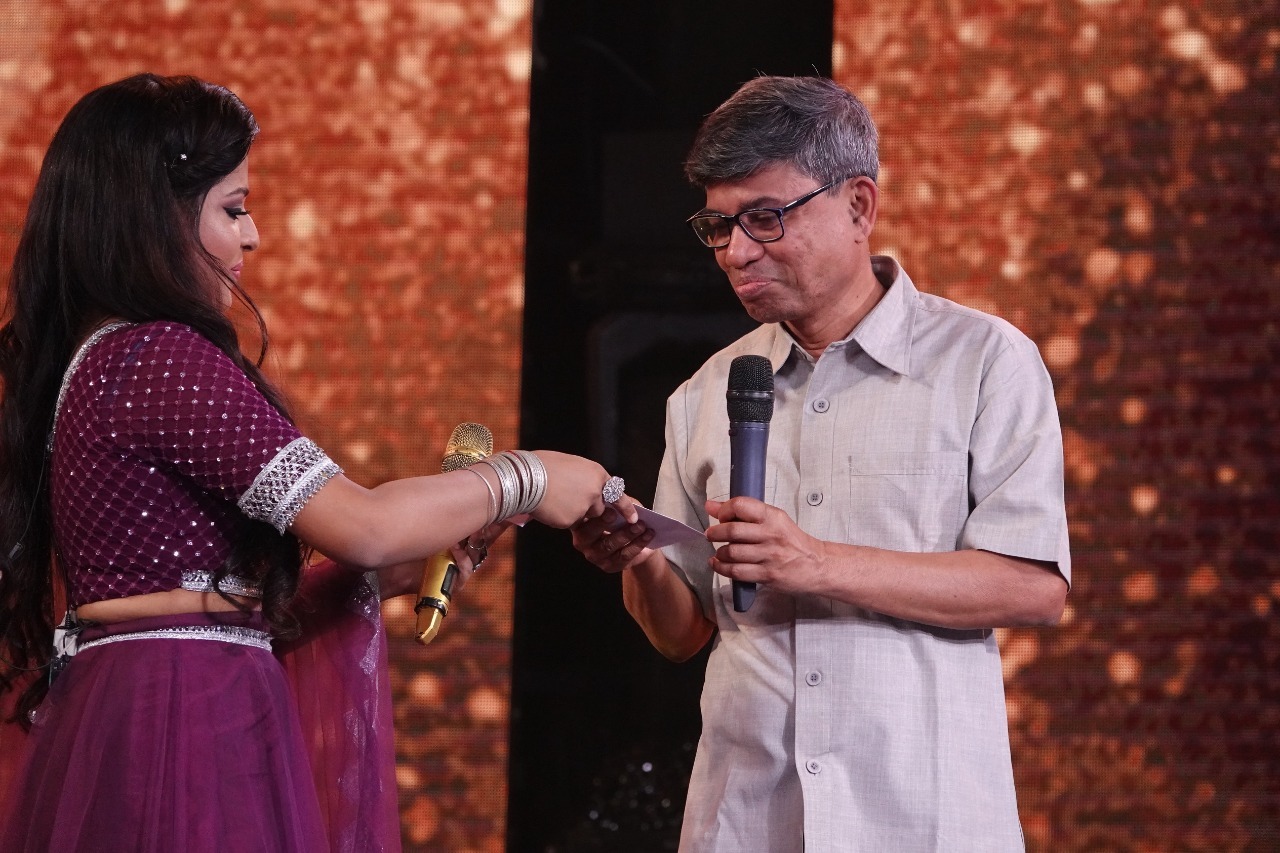

Post updated on: Jun 26, 2021 8:26:12 PM
Post updated on: Jun 26, 2021 8:26:04 PM


Post updated on: Jun 26, 2021 8:25:58 PM

Post updated on: Jun 26, 2021 8:25:52 PM

Post updated on: Jun 26, 2021 8:25:45 PM
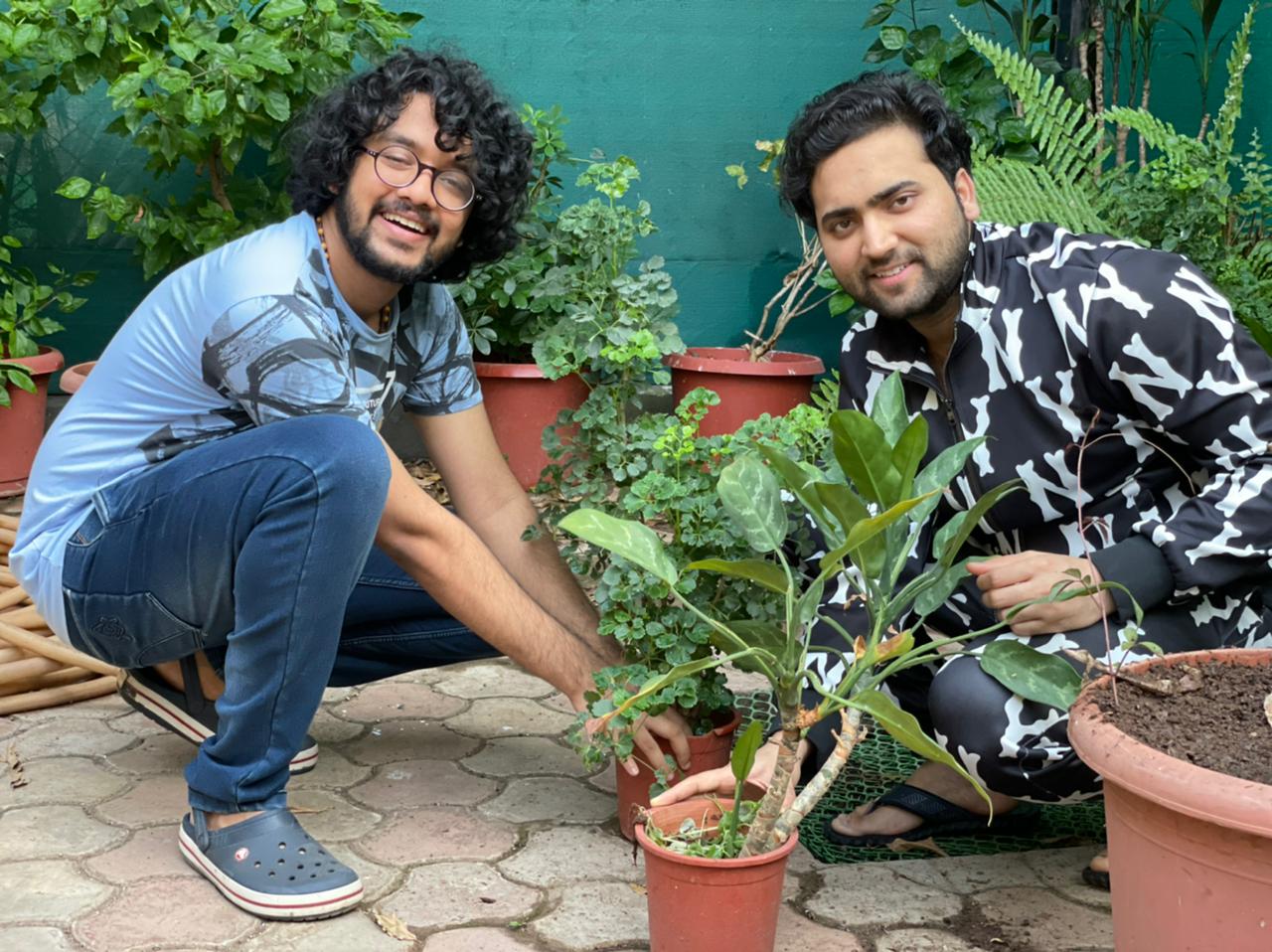
Post updated on: Jun 26, 2021 8:25:36 PM

Post updated on: Jun 26, 2021 8:25:27 PM
- Organization-
Every company has a big hierarchy. And it is very essential to build a
strong organisation by hiring good and experienced employees and to train
them from time to time.
- Commitment-
Everyone from top to bottom objective must be to achieve the goal of the
organisation.
- Process-
Hotels follow standard operating procedures for every work. If everyone
follows the procedure provided by the employee, the system will be error
free.
- Leadership-
The hierarchy must have good leaders. Mostly companies are known by good
leaders and vice versa.
Business Process Re-Engineering (BPR)
-
Creating and identifying strategic business objectives
-
Creating core and sub processes
-
Identifying process owners
-
Creating and validating performance measures
-
Collecting data on performance measures
- Determining and prioritizing projects for improvement.
- Implementation of the Six sigma philosophy on the Front Office department of the hotel are:
-
To maintain optimal inventory
-
Minimize wastage/pilferage
-
Standardized output of Food and Beverage
-
Reduce the time from order to service
-
Optimal utilization of current product mix (F&B/Outlets) to
increase revenue.
Post updated on: Jun 23, 2021 2:49:55 AM
- Fluorescent lights tend to dim often, ruining the ambiance of your shop. Such things don't happen when you've installed LED lights inside your shop. Most importantly, LED lights are way more powerful than fluorescent ones and those generate brighter light as well.

- LED lights are the best options for long-term usage.
You must go for LED lights instead of fluorescent lights if longevity is your primary concern. The average durability of LED lights is approximately 100000 hours while it is 30000 hours for fluorescent lights.
- LED lights don't emit excess heat and hence such lights don't increase the heat inside your shop. Fluorescent lights, on the contrary, generate way more heat and increases the temperature inside your shop.
- The best part about LED lights is they are way more energy-efficient than fluorescent lights. You can expect a significant decrease in the electricity bills of your shops by installing LED lights.
Post updated on: Jun 14, 2021 5:40:20 PM
Trending authors
Discover your area of interest
Advertisement
Art & entertainment
Astrology & spirituality
Cooking
Culture
Current affairs
Education
Fashion
History
Hotel management
Industry
Medical & fitness
Motivational
Politics
Real life stories
Sports
Story & poetry
Technology
Top in search
Tourism
More recent categories
Buy Gold Nuggets in Cameroon(Public)
By: nkongsamba
Gold for sale in Cameroon(Public)
By: nkongsamba
Rough Diamonds in Asia(Public)
By: nkongsamba
Others(Public)
By: Gavin
fashion(Public)
By: Exact
Education(Public)
By: claire
Technology(Public)
By: Sai
Preschool(Public)
By: BrainBunny
Education(Public)
By: James
Suicidal in Australia(Public)
By: nembutalaustralia


